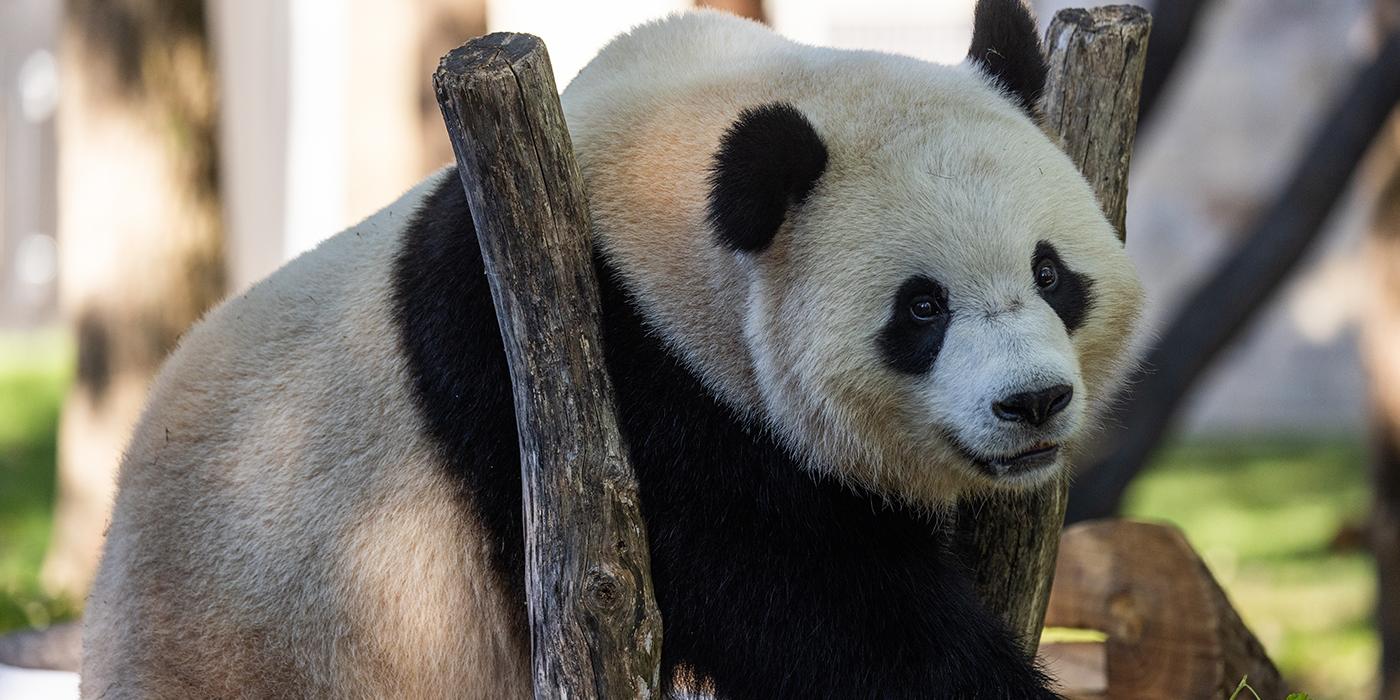Giant panda Update Apr 17, 2013
Both Mei Xiang and Tian Tian are returning to their normal routines, following the breeding season. Occasionally, we are still seeing some scent-marking or some restlessness, but their appetites have returned, and both are spending their days exploring their yards independently, with little interest in what the other is doing. While giant pandas live in proximity to each other in the wild, they rarely interact socially aside from breeding season. They communicate to each other via scent-marks along trees and large rocks, indicating their identity and reproductive status to other giant pandas in the area.
Sometime in June, we will expect to see Mei Xiang starting to den up in preparation for the birth of a cub or the end of a pseudopregnancy. Since giant pandas experience delayed implantation, their gestation can be anywhere from three to six months. We will continue to monitor Mei's behavior and hormones, watching anxiously for her hormones to enter their secondary rise. This will alert us that we only have a month or two to wait until we know whether or not all of our efforts have resulted in a healthy giant panda cub.
Related Species:




